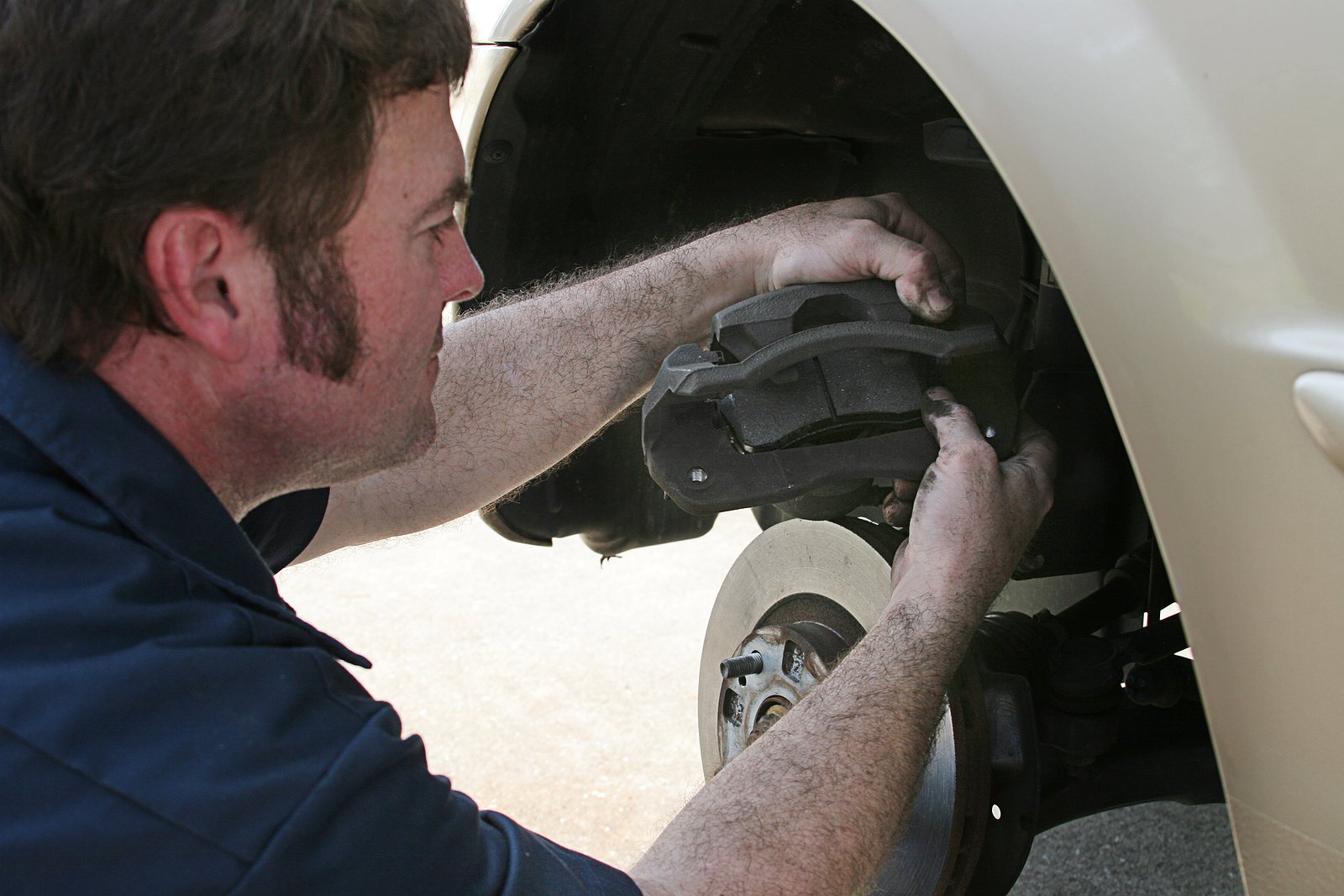
What are brake pads?
Brake pads make up the vehicle’s braking system. It’s one of the most important parts of the vehicle’s operating system. Brake pads are designed to interact with the brake discs. They are fitted within the calliper, with their friction material almost touching both sides of the brake disc.
When the brake pedal is pressed by the driver, hydraulic fluid in the calliper enables each brake pad to push against each side of the rotating brake disc. The friction causes the vehicle to slow down and eventually stop.
When should brake pads be replaced?
Brake pads are considered to be consumables within a vehicle. This means that they will have to be replaced every so often, when they have become worn. You’ll be notified when a van brake replacement is needed when you bring it in for a service and health check. Some of the other signs that your brake pads are wearing include:
- The van pulls to one side
- Brake pads are showing less than 3mm of visibility
- The brake system is screeching when you press the pedal
- A warning light may appear on your dashboard
What are the different types of brake pads available?
There are also four different types of brake pads available. The type you have will vary depending on the manufacturer, the size of the vehicle and the budget you have. There are different types of brake pads available, including:
- Organic – great for those who are on a budget, but their lifespan is shorter when compared to other brake pad options
- Low metallic – these can be noisy, but they have a longer life expectancy than organic brake pads
- Semi-metallic (sintered) – these use fused metal particles, including copper and bronze. They offer great braking performance and have a long lifespan. Although they may wear brake discs down quicker than other brake pads
- Ceramic – lasting longer than other materials, these are resistant to wear. However, they’re far more expensive than their counterparts
What are brake discs?
Brake discs, also known as rotors, are circular plates made of metal that are attached to a vehicle’s wheels. They work alongside brake pads to slow down and eventually stop the vehicle when the brake pedal is depressed. Brake discs are designed to turn motion into thermal energy.
When the pedal is pressed, a signal is sent via the master brake cylinder to the callipers to bring the brake pads together against the large surface area of the brake discs. This causes friction, which, in turn, slows down the rotation of the wheel to stop the movement of the vehicle.
What are the different types of brake discs available?
Brake discs come in various sizes, designs and dimensions. They are often what you see behind the alloy. They’re typically made from either cast iron or steel, although there are some instances where brake discs can be made from carbon ceramic composite for high performance. The different types of brake discs are as follows:
- Blank and smooth – one of the most common brake disc types available, they’represent on most vehicles
- Drilled – these feature drilled holes, as the name would suggest, around the metal surface
- Slotted – slots or lines are present in the metal surface, instead of holes
- Drilled and slotted – these include a combination of holes and slots and lines
What is the difference between brake pads & brake discs?
Brake pads and discs both make up an important part of the vehicle’s braking system. Without these, the vehicle would be unable to slow down or stop. However, they often work in combination with each other and are not the same thing. Brake pads press against the brake discs in order to cause friction that slows down and stops the vehicle.
Brake discs often remain in situ, whereas the brake pads will move from one position to another when the brake pedal is pressed. However, brake pads are consumables and will need to be replaced when they’ve become too worn. Brake discs, on the other hand, are far more durable, lasting longer than brake pads. Although brake discs will still need to be replaced at some point.
Where can I have my van brakes changed?
VanServ is able to carry out van brake replacements for a wide range of vans, including Renault, Ford, Vauxhall, Nissan, Citroen, Fiat and Mercedes. We have a fully trained and qualified team at the helm of our operations who are able to identify and diagnose the problem at hand and provide an effective solution that’s executed in a quick and timely manner. We ensure minimal vehicle downtime, enabling you to get back behind the wheel as quickly as possible, whether you use your van for business or leisure purposes. For van brake replacements you can trust, look no further than VanServ.
VanServ is pleased to provide van repair services, including the replacement of brakes. In addition to this, we can also deal with air conditioning issues, clutches, diagnostics, engine repairs, gearbox replacements, key cutting, vehicle programming, vehicle remapping and general vehicle servicing, to name just a few. If you would like further information about our services, get in touch with a member of our friendly, knowledgeable team today – we’re always happy to hear from you.
